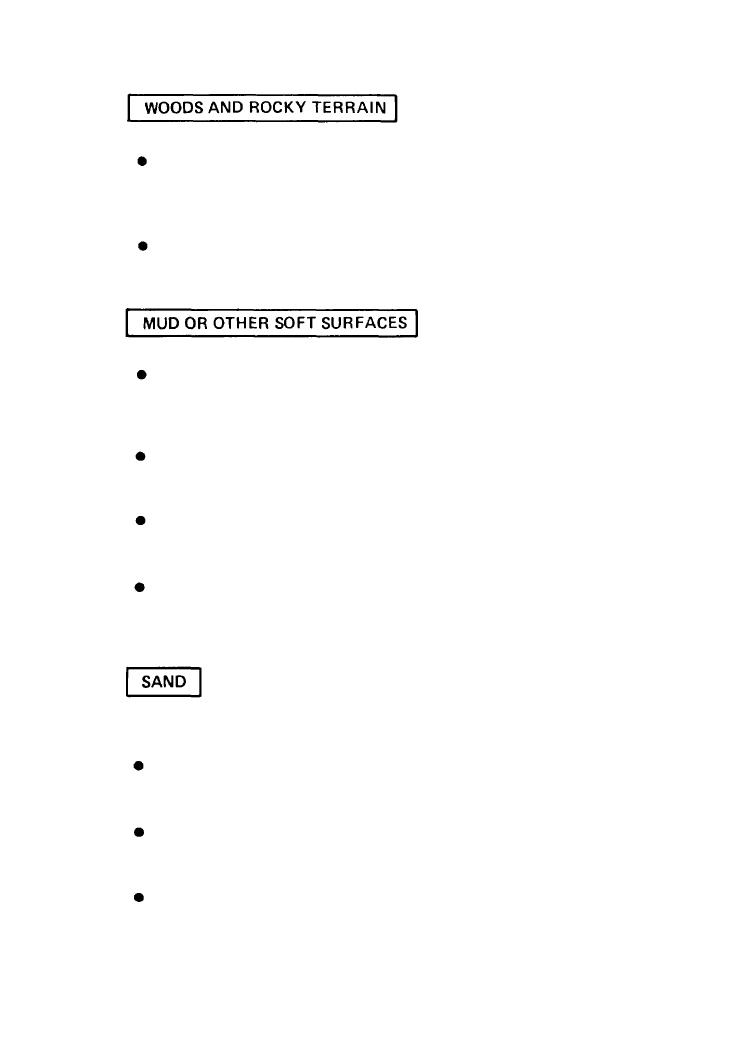 |
|||
|
|
|||
|
|
|||
| ||||||||||
|
|
 TM 9-2320-273-10
MAKE SURE YOUR TRUCK CAN CLEAR ANY GROUND OBSTRUCTIONS LIKE
STUMPS OR ROCKS BEFORE YOU DRlVE OVER THEM. Such objects can damage
components underneath the truck. Try to avoid low hanging limbs which might cause
damage.
If you must drive over very rocky terrain, BE SURE YOU HAVE A SPARE WHEEL
AND TIRE (M915 and M916), if possible, since there will be a greater chance of
tire punctures.
Before you enter mud or other soft surfaces, check the conditions, and SELECT
THE TRANSMISSION GEAR RANGE THAT YOU JUDGE APPROPRIATE TO
GET YOUR TRUCK THROUGH the area. Enter the soft area at a medium speed
for the gear range you have selected.
MAINTAIN A STEADY PRESSURE ON ACCELERATOR PEDAL to keep your
truck rolling until you reach solid ground again. Do not accelerate to the point of
spinning the wheels.
IF YOUR TRUCK GETS STUCK, TRY TO PULLOUT SLOWLY IN A LOW
GEAR. YOU MAY HAVE TO PLACE BOARDS, BRUSH OR SIMILAR
MATERIALS UNDER TIRES TO PROVIDE TRACTION.
IF YOUR TRUCK IS NOT COUPLED TO A TRAILER, YOU MAY BE ABLE TO
USE THE WINCH TO HELP PULL THE TRUCK OUT. Attach winch cables to
another vehicle or another heavy, solid object that will not move under the load
you will be putting on it.
If you operate the M915 thru M920 in sand:
MAINTAIN STEADY, EVEN MOVEMENT WITH THE TRANSMISSION IN LOWER
GEAR RANGES. Try to keep your truck rolling without straining the engine and
power train.
If you get stuck, ADJUST TIRE PRESSURE to gain additional traction. Reduce
pressure in the front tires to 50 psi and reduce pressure in the rear tires to 45 psi.
After you have the truck out, inflate all tires to normal pressure.
IF THE TRUCK BOGS DOWN even though you have reduced tire pressure, PLACE
BOARDS, BRUSH, CANVAS, OR SIMILAR MATERIALS UNDER AND IN FRONT
OF TIRES AFTER SHOVELING A CLEAR PATH AHEAD OF EACH TIRE. This
should provide better traction.
2-91
|
|
Privacy Statement - Press Release - Copyright Information. - Contact Us |